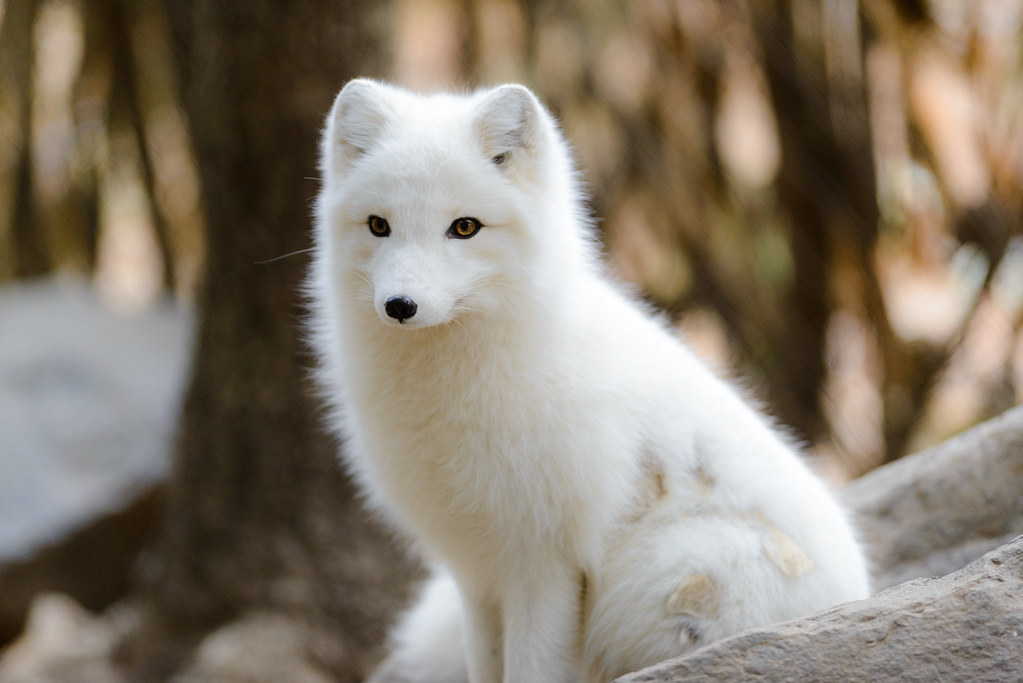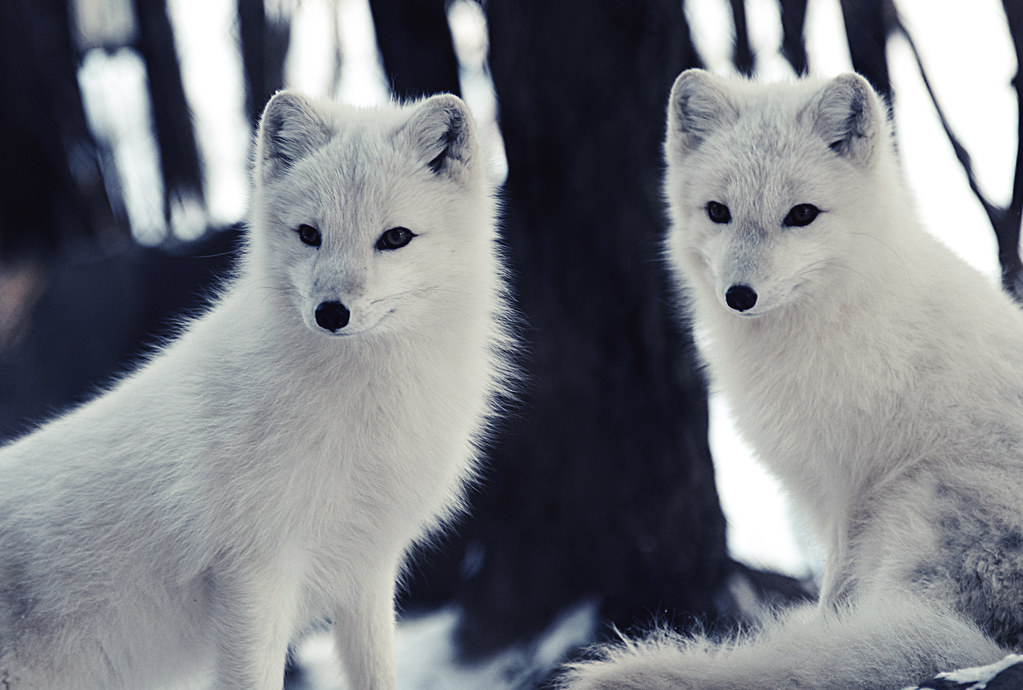In the Arctic’s frigid expanse, the Arctic fox exemplifies adaptive ingenuity through its remarkable seasonal transformations. This small mammal, renowned for its charming appearance, undergoes a significant shedding process that enhances its survival in extreme conditions. As it transitions from a thick white coat in winter to a muted brown or grey in summer, the Arctic fox not only showcases a fascinating spectacle but also illustrates the critical strategy of camouflage. Understanding this shedding cycle offers valuable insights into the species’ resilience and ecological adaptation.

The Arctic fox’s fur can help them adapt the environments.
The Arctic fox (Vulpes lagopus) is renowned for its stunning winter coat, which is a vital adaptation that allows it to blend into its snowy surroundings. This fluffy white fur is not just for show; it provides essential insulation against the brutal cold of the Arctic winter. Weighing between 6 to 10 pounds and measuring an average of 43 inches in length (including tail), the Arctic fox is built for life in the tundra. Unlike other canids, their paws are sheathed in dense fur, earning them the nickname “lagopus,” which means “rabbit-footed.”
As the seasons shift, the Arctic fox undergoes a remarkable transformation. In early April, the white foxes begin to shed their long winter fur. The shedding process can vary among individuals but generally culminates by late June. During this period, the face, legs, and upper parts of the body transition to short, brown summer fur, while the lower sides and abdomen showcase a yellowish-white hue. This color change is not just a cosmetic alteration; it plays a critical role in their survival. The brown fur provides a camouflage that helps them blend in with the tundra’s summer landscape, which is rich with browns and greens rather than the stark white of winter.
The shedding process is vital, as the Arctic fox must adapt to the changing availability of food sources. In summer, their diet shifts primarily to small mammals, like lemmings and tundra voles, which thrive in warm weather. Interestingly, when food is plentiful, the Arctic foxes demonstrate a behavior known as caching, where they store surplus food among boulders or in dens for later use. This adaptation ensures their survival in times when food becomes scarce. As they shed their winter coats, Arctic foxes are also gearing up for the challenges of summer hunting.
The shedding process itself can be a sight to behold. As clumps of white fur flutter away in the breeze, it’s as if the Arctic fox is shedding its old self to embrace the new season. It’s a captivating sight, one that can sometimes lead to amusing situations—especially when the fox’s fur becomes stuck on bushes or branches, giving it the appearance of a “sticky rice cake.” This visual transformation not only affects their physical appearance but also alters their behavior. During this time, Arctic foxes can be seen more frequently as they venture out to hunt, socialize, and explore their surroundings, fully embracing the warmer months with their new coats.
Moreover, the Arctic fox is a fascinating example of adaptation—not only in fur color but also in behavior and habitat choice. They are nomadic creatures, migrating great distances in search of food. Their movements are often dictated by the availability of prey, particularly lemmings, whose populations fluctuate with the seasons. In winter, when the snow covers their habitats, the Arctic foxes utilize their keen hearing to locate lemmings beneath the snow, listening for the faint sounds of movement. This hunting technique showcases their remarkable adaptation to life in the Arctic, where survival hinges on their ability to listen and react swiftly to their environment.
As the months pass and the seasons continue to change, the Arctic fox prepares for the return of winter. In September and October, the foxes undergo another shedding process, where they grow back their luxurious white winter coat, completing the transformation just as winter descends upon the land. By November, they are once again adorned in their stunning white pelage, ready to navigate the snowy wilderness.
Throughout this journey from winter white to summer brown and back again, the Arctic fox exemplifies nature’s magic. Their ability to adapt not just in appearance but also in behavior speaks volumes of their resilience and resourcefulness. As we observe these endearing creatures, it’s important to appreciate the incredible cycle of life that they embody, teaching us about survival, adaptation, and the beauty of the natural world. Whether they are bounding through snowdrifts or foraging for food in the summer’s warmth, Arctic foxes remain a symbol of the wild—ever-changing yet always captivating, like the very seasons themselves.
In the spring, as the ice begins to melt and the sun’s rays warm the Earth, the Arctic fox embarks on the shedding process, shedding its thick winter coat to reveal a new, sleeker summer fur. This transition is not merely a superficial change; it signifies a shift in lifestyle and behavior. The foxes, now lighter and more agile, begin to explore their surroundings with renewed vigor. They hunt small mammals like lemmings and voles that thrive during the warmer months. Their diet broadens, embracing the abundance of life that flourishes in summertime.
Summer is a period of abundance. As the landscape transforms into a patchwork of greens and browns, the Arctic fox blends seamlessly into its environment. The brown fur provides the perfect camouflage amid the lush vegetation, allowing the fox to stalk its prey stealthily. The foxes are often seen foraging energetically, their curiosity leading them to new territories and food sources. The long daylight hours of the Arctic summer allow them to maximize their hunting opportunities, showcasing their agility and cleverness.
As they hunt, Arctic foxes demonstrate remarkable social behavior. They are often seen working in pairs or family units, cooperating to catch prey. This teamwork extends beyond hunting; it becomes a crucial part of their social structure. Foxes interact, play, and communicate, forging bonds that help them navigate the complexities of life in the tundra. The importance of social ties cannot be overstated in this harsh habitat, where collaboration can mean the difference between life and death.
As summer wanes and the temperature begins to drop, the Arctic fox prepares for the approaching winter. September and October usher in another phase of shedding, as the fox grows back its iconic winter coat. This luxurious, thick fur serves as insulation against the biting cold of the Arctic’s long winters. The transformation is striking; the once brown fox now becomes a picture of elegance, draped in a coat of pristine white.
With the return of snow, the Arctic fox faces the challenge of surviving in a landscape that can be unforgiving. However, this is where their adaptability shines. They have developed specialized hunting techniques that allow them to thrive even when food is scarce. The fox listens intently to the sounds beneath the snow, using its acute hearing to detect the movements of lemmings hidden in their burrows. A well-timed leap and dive into the snow can result in a successful catch, showcasing their incredible hunting prowess.
Winter is also a time of solitude for the Arctic fox. During the colder months, these creatures often roam alone or in small groups. They rely on their instincts and intelligence to navigate the frozen terrain, often scavenging the remains of larger predators’ kills, such as seals or caribou. Their keen sense of smell guides them to hidden food sources, ensuring their survival through the harsh winter.

People are left with a sense of wonder and respect for the incredible adaptability of Arctic fox.
As we follow the Arctic fox through its seasonal journey, we witness not just the physical changes that occur, but also the profound adaptations that underpin its life cycle. The Arctic fox exemplifies resilience in the face of environmental extremes, teaching us about the delicate balance between survival and adaptation. Their life story is one of beauty, tenacity, and a deep connection to the rhythms of nature.
Through the changing seasons—from the vibrant life of summer to the stark beauty of winter—the Arctic fox remains a testament to nature’s wonders. Its ability to adapt, thrive, and endure is not just an animal story; it is a narrative that resonates with the human experience, reminding us of our own journeys through life’s seasons. As we reflect on the Arctic fox’s captivating life, we are inspired to appreciate the intricate dance of nature, where survival is woven into the very fabric of existence.
In a world that often seeks to separate us from the natural environment, the Arctic fox serves as a poignant reminder of our interconnectedness with all living beings. Its journey through the seasons encourages us to embrace change, celebrate resilience, and remain curious about the world around us. Whether clad in shimmering white fur or blending seamlessly into the summer landscape, the Arctic fox remains an enduring symbol of nature’s beauty and complexity, inviting us to explore, learn, and cherish the wild.
As we watch the Arctic fox navigating its world, we are left with a sense of wonder and respect for the incredible adaptability of wildlife. Their story is a beautiful reflection of life’s cyclical nature, where every transition—from snow-covered lands to sun-soaked tundra—unfolds with grace and purpose. Let us continue to observe and protect the Arctic fox and its habitat, ensuring that this remarkable creature can thrive for generations to come, reminding us of the beauty and resilience that exists in our natural world.
The life of the Arctic fox through the seasons illustrates a remarkable journey of adaptation and survival. Each phase reveals the fox’s extraordinary capabilities, highlighting the delicate balance of life in the harsh Arctic environment. Reflecting on this creature’s resilience encourages us to embrace change and celebrate our own inner strength as we navigate the complexities of our lives.
Related posts:
How do arctic foxes hunt in the snow?




